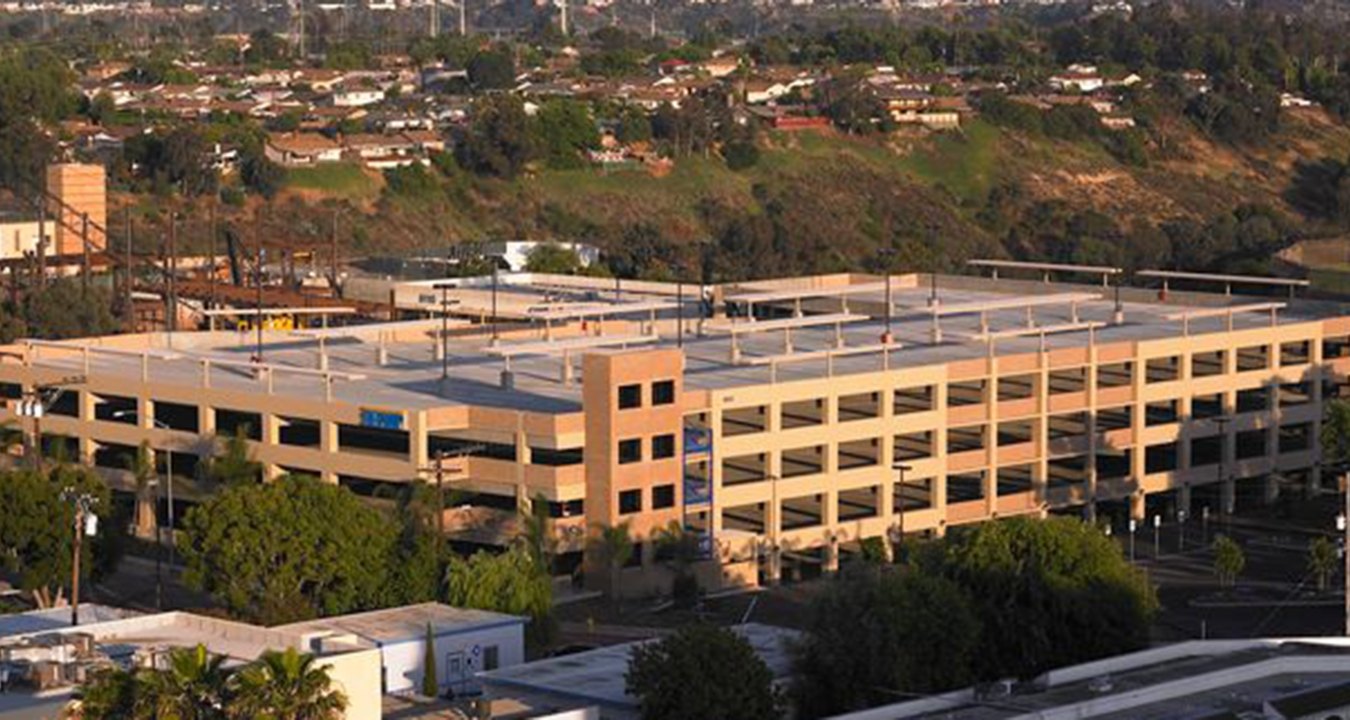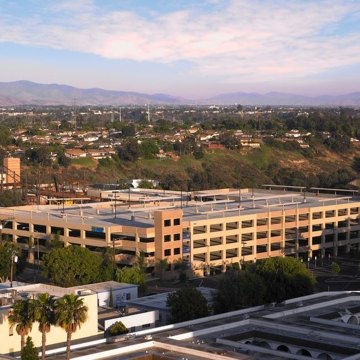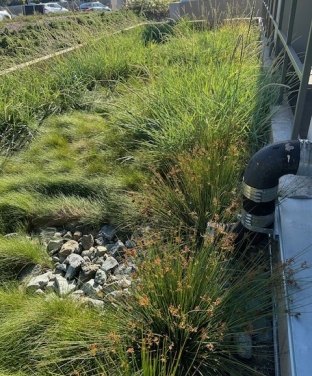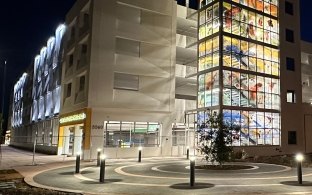Where Does All That Water Go?
While stormwater control may not be top-of-mind when first considering parking, it influences both technical and environmental considerations.


Whether a parking structure or parking lot, large areas of concrete and asphalt lay beneath the sky, exposed to elements, including rain. These surfaces are impervious, meaning the water doesn’t soak in, but rather, runs off into existing storm drain infrastructure. This downstream flow of vehicular runoff water led Congress to enact the Federal Water Pollution Control Act of 1948 which was later amended as the Clean Water Act of 1972. This Federal law, administered through the Environmental Protection Agency, is interpreted and enforced at the state and local level, significantly impacting parking design. While stormwater control may not be top-of-mind when first considering parking, it influences both technical and environmental considerations.
So, what factors need to be considered to effectively manage large quantities of stormwater?
- Detention – pooling the water, either at grade or below grade in engineered receptacles, and then allowing it to drain into local storm drains at a gradual pace
- Retention – pooling the water and allowing it to remain in place
- Evaporation – relying upon the local climate to vaporize water
- Consumption – utilizing flow for plants, animals, and onsite irrigation systems
- Infiltration – the water drains down and recharges the groundwater table if the local geology has sufficient permeability (ability to soak in)
After effectively mitigating the stormwater flow, the focus shifts toward improving water quality through the reduction of pollutants. While this can take many forms, we typically rely on bio-basins, filters, and dry wells to remove sediments and pollutants.

Bio-basins detain or retain and use evaporation and consumption to control the volumes of water. They are landscaped with plants and trees to effectively consume motor oils, brake dust, anti-freeze, and other pollutants.
Parking lots are often able to drain stormwater into Low Impact Development (LID) landscaped bio-basins. Depending on drainage patterns and topography, these LID areas can be broken into smaller and more numerous basins, or, space permitting, one large basin.
Parking structures, on the other hand, generally have concrete decks elevated above grade which requires the design to account for the collection and piping of stormwater to the quantity and quality control areas. The footprint of the parking structure can greatly affect how much space is available for stormwater treatment. Conversely, the space needed for managing onsite stormwater can also significantly impact the size and shape of the parking structure. This interplay impacts the architect’s initial site assessment for the parking structure. As a result, the preliminary functional design can be heavily influenced by the available stormwater control strategies, considering topographical and geological constraints.
Having a design and building partner who understands the importance of a well planned and executed stormwater control design can reduce and eliminate negative impacts to existing infrastructure and waterways. Their early involvement and expertise can be key to increasing green space, planting, shade, and overall appeal to both humans and wildlife.
While it’s responsible stewardship to ensure our waterways remain as clean as possible, it does require innovative approaches to effectively manage what nature brings to parking sites. Technological advances and evolving thinking have changed the design perspective and have in turn, significantly improved the water that indeed sustains our lives.
Written by: Domenic Koyama, Senior Preconstruction Director (DKoyama [at] McCarthy.com (DKoyama[at]McCarthy[dot]com)); Brent Newby, Senior Preconstruction Director and Parksmart Advisor (BNewby [at] McCarthy.com (BNewby[at]McCarthy[dot]com)); Michael Bockhold, Parksmart Advisor (MBockhold [at] mccarthy.com (MBockhold[at]mccarthy[dot]com)) at McCarthy Building Companies.





